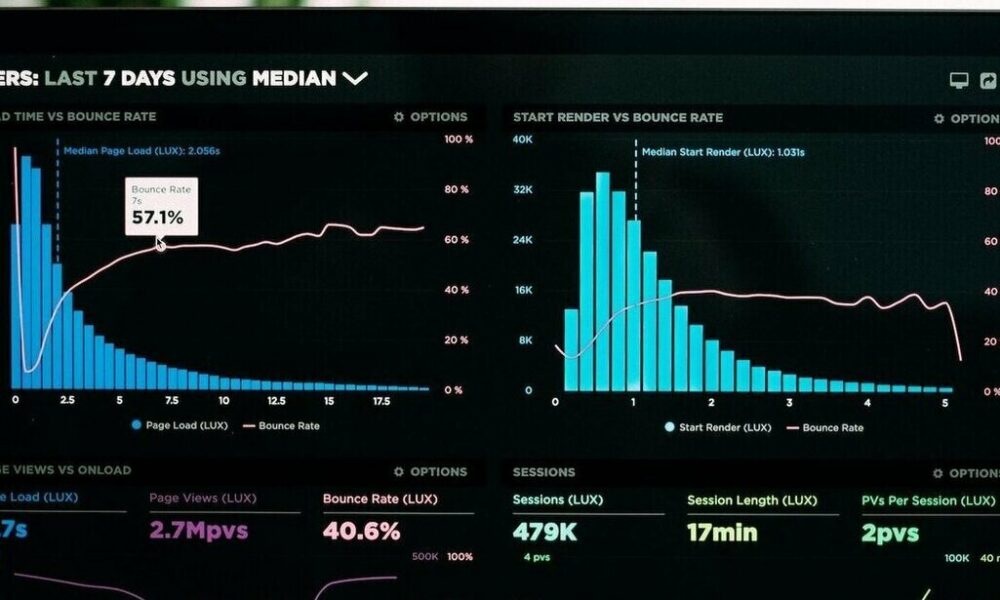
Working with data involves performing various activities. Often, however, they are confused. This is what happens with, for example, the data analysis and data modeling, which are often confused. And they cannot be more different disciplines, even though they are related. Basically, data analysis is about the use of data and information for making business decisions. For its part, data modeling deals with the architecture that makes the work of data analysis possible.
But both tasks, according to TechRepublic, are considerably more complex than those basic definitions indicate. They also have more differences and can work together to boost companies of all kinds, as we will see below.
Data analysis: definition
Data analysis is a system of work with information that involves examining, interpreting, debugging, transforming, migrating, and modeling. It is, therefore, a fairly complex process, which aims to obtain useful information for internal and external use in a company. Its purpose is always the same: to ensure that the company achieves its business objectives, and even that it may consider new ones or modify a previously marked line of action based on the information revealed by the data.
As we have seen, data modeling creates the architecture that allows teams working with data to get the information they need, while data analysts are responsible for, using data models created through modeling, analyze the information available. .
Data analysis is not, on the other hand, a uniform process, since it can take different approaches. Among them, the most common are the following: statistical analysis, inference analysis, diagnostic analysis, predictive analysis, prescriptive analysis and data mining.
The data analysis process
In either case, the first step in performing a data analysis operation is to set priorities and objectives for the analysis. One of the most useful steps you can take when starting a data analysis process is to ask yourself what problem you want that data to help you solve. Also what objectives does the company want to achieve through data analysis.
When you are clear about all this, it is time to obtain, raw, the data that is needed in each case. Obviously, they cannot be obtained in any way, but first you have to choose the sources, so that they are in line with the objectives to be achieved, or those that can provide the necessary information to answer the questions and doubts they have.
Already with the raw data, it’s time to clean them. That is, separate all the necessary information from the one that is not useful. Among other things, it implies that they do not have duplicates or anomalies. No inconsistencies either. They must also be formatted correctly. Only when the data is clean can it be analyzed to locate relationships, patterns and trends.
At this point, analysts look for opportunities and risks that lurk in business decisions. Also information to support a decision or to be able to discard a line of business. Also to identify new options and trends that can serve to open new paths or close others.
At this point, data analysts will use a variety of tools to do their jobs, ranging from utilities as common as Excel to more specific ones like RapidMiner. They may even have to develop specific software or extensions for working with data, using languages such as Python or R.
Once the necessary information has been refined and extracted, the data is ready to proceed to its interpretation by an expert. The results are then presented to whoever is responsible for the work related to the data. It is likely that they will also be the one in charge of verifying the information that comes to them, but in many cases it will be necessary for them to be previously verified.
Finally, the person responsible for the data of an organization carries out, with the data resulting from the analysis that he has received, reports and graphs to present them to the rest of the management of a company or a department. Among other things, the data manager will generate graphs, maps and tables with them. Everything to make them understandable, within a context, to those who have to make business decisions in a company or department.
What is data modeling and how many types are there?
Data modeling is nothing more than a strategy focused on transforming raw data into structured representationsand in many cases visual, information that helps analysts make sense of raw data.
Among other things, in addition to what is necessary to work with data, also try to perform a mapping of the data types used by a company, where they are stored and in what systems they are located. In addition, it establishes the relationships between the different types of data, and finds the best way to group and organize them by establishing the formats and attributes they must have.
Therefore, companies have to develop the models in a way that is focused on the needs of their business. They must also see to it that they translate business needs into data structures, and develop concrete database designs. But also be prepared to move forward and change when necessary. In many cases, the data will provide the necessary clues for this.
There are several types of data models, the most common of which are relational, dimensional, and entity-relationship. The first store data in records of fixed format, and prepare them in rows and columns of tables. The dimensional model is less rigid and structured, and favors the development of contextual data structures related to business use, or context. It is a database structure optimized for online queries and data storage tools. Finally, the entity-relationship model uses formal diagrams that represent the relationships between entities in a database.
There are also three main data abstraction models: the conceptual data model, the logical data model, and the physical data model. The first can also be described as a roadmap or vision of a company. This is a first layer of abstraction that represents the general structure of the model, and is the point at which data modeling usually begins, identifying the data sets and the flow of information through the organization.
As for the physical data model, it is the second abstraction layer of a data model, and it focuses on providing more details about the data model, focused on the data flow and the content of the database. Finally, the physical data model layer, the third abstraction layer of a model, defines how the logical model will be applied to the current dataset.
With this layer, IT teams create the actual database structure, as well as being able to choose the hardware and software they need to support the plan. Note that multiple physical models can be derived from a single logical model if different database systems are used.
Differences between data analysis and data modeling
Both data analysis and data modeling are essential for data management and for operations that require them. Organizations that are primarily focused on a digital transformation process cannot choose one: they have to use both. Only in this way can they fully develop data architectures and use them to improve their operations.
As we have mentioned, data modeling is the time of the road and the basis of software development and everything related to databases. When the data model is ready, data analysis comes into play, which is exclusively focused on the use of data to improve decision making, and depends on the infrastructure that data modeling offers.
Of course, for companies that base their business model on data, both disciplines have a lot in common. In both cases they have to be in tune with the objectives and priorities of the business. Furthermore, both are part of a strong data culture. When used together, companies can better serve customers, increase sales, make better decisions, meet privacy and governance goals, and support all decisions with quality data.



